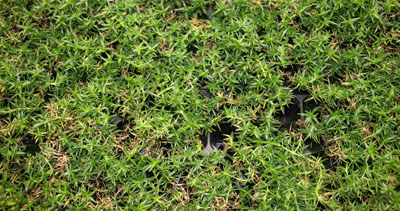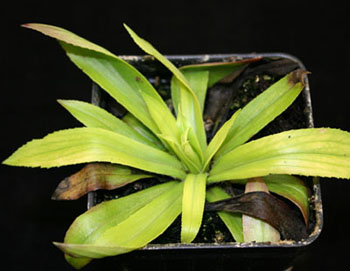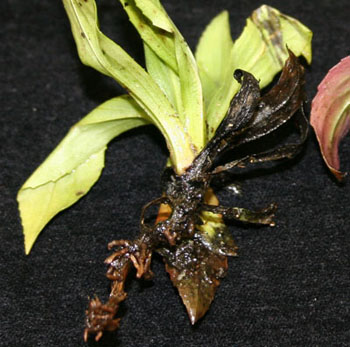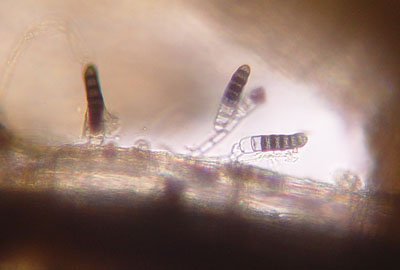Thielaviopsis or black root rot
July 7, 2015
Root and stem rots
Pathogen
Thielaviopsis basicola.
Hosts include
Digitalis, Gaillardia, Geranium, Lathyrus, Lupinus, Pachysandra, Phlox and Viola.

Infected geranium with poor vigor and dieback symptoms.
Symptoms
Stunting, yellowing and plant death. Symptoms are often mistaken for nutrient deficiency symptoms.

Yellowing of phlox foliage caused by black root rot.
Spread
Thielaviopsis basicola produces spores that can persist for long periods of time in soil or on infested pots and equipment.


Chlorotic foliage caused by Thielaviopsis basicola. These symptoms are easily mistaken for a nutrient deficiency. At right, infected roots are darkly colored and rotted by black root rot.
Reusing contaminated equipment is a common source of disease. Fungus gnats and shore flies can vector spores.
Management
Do not reuse plug trays, flats or pots for susceptible crops. Keep good records of the production areas where there have been problems with T. basicola. Avoid growing susceptible crops in these areas for several years. Fungicide drenches should be used to protect very susceptible plants from infection.

Darkly colored spores of Thielaviopsis basicola have a distinctive morphology. Their thick spore wall helps them persist for several years in soil.
Print a PDF of this page: Thielaviopsis or black root rot



 Print
Print Email
Email



